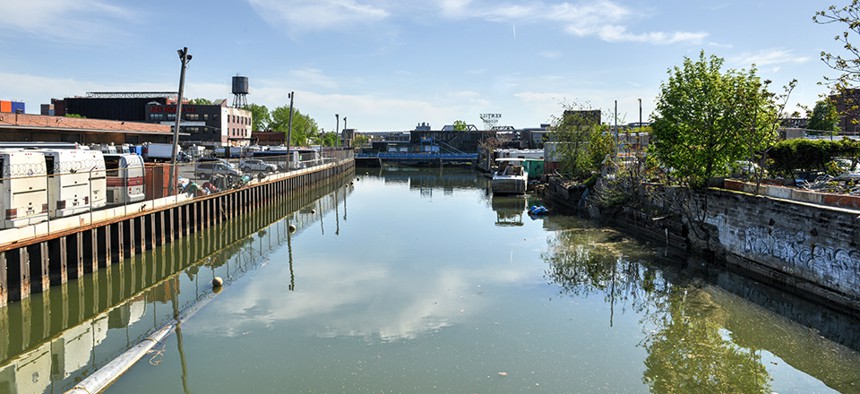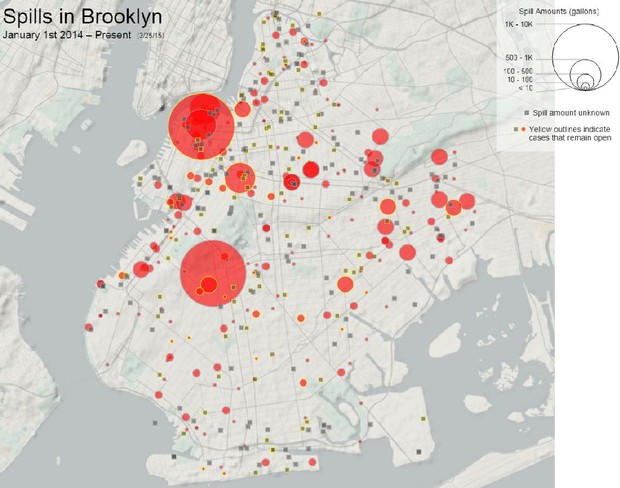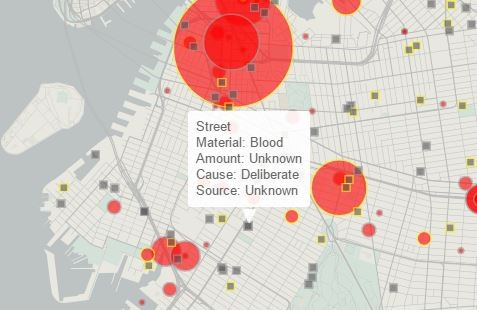A Grimly Fascinating Map of Toxic Spills in Brooklyn

Gowanus Canal runs through Brooklyn in 2014. Felix Lipov / Shutterstock.com
The borough is splattered with escaped pollutants like oil, paint, raw sewage, and mystery blood.
Jill Hubley's lived in Brooklyn for 14 years, so she's familiar with the Greenpoint oil spill , a decades-long seepage of 17-to-30 million gallons of petro-crap that ranks as one of America's biggest-ever land spills.
But recently the 33-year-old web developer became curious about what other, lesser pollution might be fouling up her 'hood. So she scooped up a heaping barrel of records from the New York State Department of Conservation and made this grimly fascinating map of 15 months of noxious spills across Brooklyn.
The incidents cover a range of substances—including paints, dry-cleaning chemicals, raw sewage, and a poison rainbow of oil from engines,transmissions, stoves, and hydraulic equipment—and they are absolutely everywhere. "I expected to see a concentration of spills in the more industrial sections of the borough, like Bushwick," Hubley emails. "They are instead fairly dispersed."

New York receives about 16,000 reports of spills each year, with the majority relating to petroleum. In Brooklyn, the largest spills tend to be dielectric fluids like coolants for high-voltage systems, according to Hubley's map. But black gold's status as king of spills is reflected in the sheer number of contaminations, especially in the central and eastern parts of the borough.
"A larger number of the medium-sized spills (100-500 gal.) occur in Bushwick and East New York," she writes. "The predominant cause of those are abandoned drums."
The spill that stopped Hubley in her tracks, however, was not petrochemical but biological. "The incident that most surprised me lists the material as blood," she says. "The amount is unknown, but the cause is 'deliberate.' That's at 4th Avenue and First Street, one of the spills closest to my apartment."
(I thought this might relate to a devil-worshiping metal band slinging pigs' blood onto its audience, but that happened several days before the incident on June 23. For what it's worth, the spill happened around 11 a.m., proving it's never to early to cover the neighborhood in "deliberate" blood.)
Hubley has logged 486 spills since January 1, 2014, and says she'll update the map as information becomes available. The endeavor has pushed her thinking to what she calls a "place of concern."
"Generally I question what the long-term effect of these spills will have on the health of Brooklyn's soil and waterways," she says.

( Image via Felix Lipov / Shutterstock.com )





